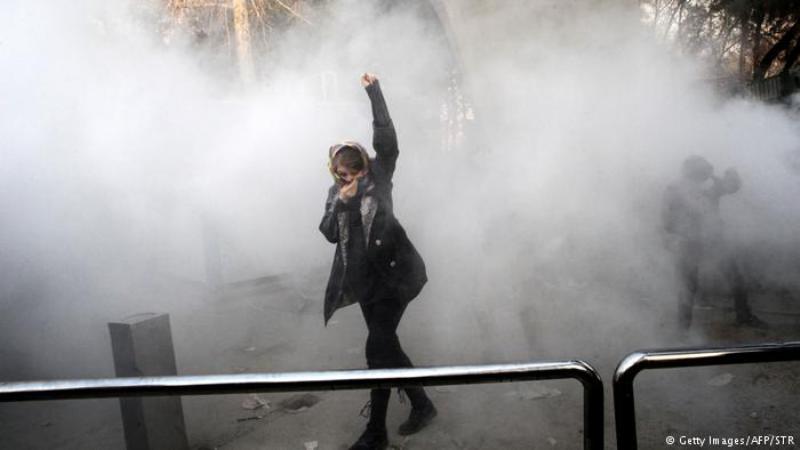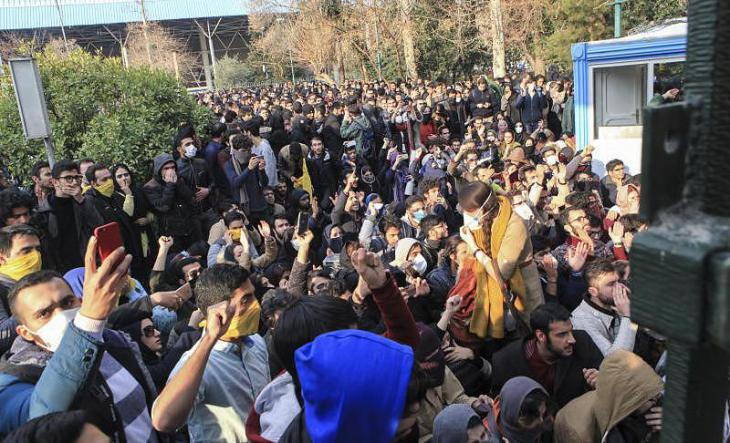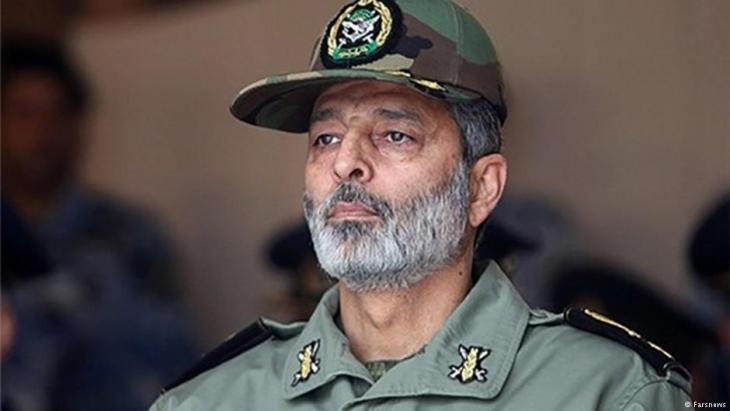The spark that turned into a wildfire

The causes of the uprising that has been rocking the Islamic Republic of Iran for over a week now are unsurprisingly both structural and contingent. Initially kicked off by the economically dispossessed youth and joined by lower sections of the middle class, students and also some pensioners, it has reached an unprecedented geographical scope with protests spanning 70 mainly smaller cities and towns in all four corners of the country. According to the authorities, 42,000 people, 90 per cent of whom are under the age of 25, have taken part, while the real number may be higher. They have been met by myriad methods of repression by the state's security apparatus, leaving over 20 people dead (again merely an official figure), 1,000 jailed and an uncounted number injured.
Besides the structural factors that have been an almost constant feature of the Islamic Republic's rule, the past months and weeks have added a new level of discontent with the regime as a whole, which led me to speculate that the recent waves of protests "may only be a forerunner of more to come".
The immediate trigger was a protest staged by Rouhani's right-wing conservative opponents in Mashhad against the president's economic performance that spiralled out of control. Then, like a wildfire, it ignited the entire country with a combination of social justice and anti-regime slogans. All this took place against the background of a wave of protests in the preceding months and weeks by workers, pensioners, teachers and students.
Since March 2016, Iran has seen 1,700 social protests, according to the Islamic Revolution Devotees Society (Jamiyat-e Isargara-e Enqelab-e Eslami), a conservative party of which Mahmoud Ahmadinejad was a founding member. Over the course of 2017, hundreds of protests took place by workers, pensioners, teachers and students. Labour protests continued due to unpaid salaries, neoliberal economic policies and resistance to labour organisation, which were confronted with harsh repression by security forces and sanctioned by arbitrary lay-offs.
While waves of such protests had already taken place throughout the Ahmadinejad presidency, President Rouhani's stance against labour rights and a decent minimum wage only exacerbated the situation. Over the course of 2017, pensioners and teachers staged many protests against unpaid pensions and low salaries, yet their concerns were ignored by the authorities. The December 7 Student Day saw a wave of university protests with students demanding social justice and an end to political tutelage, while pointing out that the climate for activism had become even worse.

Disillusionment with all areas of government
A number of key events over 2017 led popular disillusion with the regime as a whole to reach a new level. In May, after a deadly mine explosion in northern Iran, the miners' rage descended upon President Rouhani, when angry workers attacked his armoured vehicle when he wanted to visit the site. In mid-November, the heavy earthquakes shaking the country demonstrated to all Iranians the regime's utter neglect for their most vital needs, from the social housing that was built under corrupt circumstances during the Ahmadinejad years and had abruptly collapsed, burying innumerous people under the rubble, to the Rouhani administration's hesitant reaction to provide aid to the victims that left many literally in the cold.
Adding the final touch to those multilayered frustrations was the Rouhani administration's announcement of its upcoming annual budget that defied the president's bold promises to finally tackle the issue of social justice. Instead, major sums were devoted to religious foundations, run by both the regime's conservative and reformist camps, as well as the Islamic Revolutionary Guards Corps (IRGC). This led to fierce criticism of the proposed budget on social networks. Disenchanted Rouhani voters then started a Twitter campaign against their erstwhile "bearer of hope" with the hashtag "I regret" (Pashimanam). Thus, for many, Rouhani's budget plan had evaporated any hope that a turn towards social justice and a weakening of authoritarian structures might be on the horizon.The "moderates" versus the people
The fact that the more moderate part of the Islamic republic's elite, the reformists, who have lent their support to the centrist president, has equally been the target of the protesters' rage is hardly surprising. After experiencing massive corruption under the Ahmadinejad administration, Iranians soon had to learn about cases of corruption in the entourage of President Rouhani, the man who had taken up the cause of fighting corruption.
During the summer, Iranians became enraged about the elite's nepotism, mainly in the reformist camp. The outcry was provoked by a 20 July interview in which the son of the leading reformist politician Mohammad-Reza Aref credited his "good genes" for his professional success. On social media, Iranians identified more cases of such "Aqazadeh", whose lucrative jobs were due to their father's position in the system. On the one hand, this further undermined the tarnished reputation of the reformists, making clear that they were clearly part of the ruling elite and not on the side of the people they pretended to represent. On the other, the wall erected after the revolution between regime insiders (khodi), who enjoyed access to state resources and privileges, and outsiders (qeyr-e khodi), seemed to be insurmountable for most Iranians.
All these developments over the past weeks and months came on the back of increased social frustration – certainly an important factor in any uprising – during the past five years of the Rouhani presidency as economic expectations remained unfulfilled. It is true that under Rouhani, Iran has seen its GDP grow again, at around five per cent. Yet economic growth as such is not a reliable indicator of socio-economic development. Crucially, this growth has not been inclusive, that is, its dividends have not been distributed equally. Rather than benefiting larger sections of the population, the elite has merely enriched itself. For instance, the partial revitalisation of trade and investment with the outside world has almost exclusively benefitted the IRGC's and the Supreme Leader's economic empires. Given the Islamic Republic's political-economic structures, where the private sector only plays a marginal role, this lopsided outcome hardly came as a surprise, but is still discomforting. Finally, under Rouhani, poverty and income inequality, especially in smaller cities, have risen.

Rouhani's neoliberal-authoritarian model
In other words, in contrast to Rouhani's promises, barely anything trickled down to the general population. Given the administration's neoliberal leanings, its economic policies relied heavily on austerity. The latter, together with security, formed the two constant pillars of Rouhani's budget allocations. This neoliberal-authoritarian mix has neither alleviated the socio-economic misery of Iranians nor weakened authoritarian structures.
Structurally, the ongoing social misery, as well as the political system's autocratic and repressive nature, have long formed the dual and intertwined core of a regime that had monopolised economic and political power in its own hands. Today, almost half of the Iranian population hovers around the poverty line, which tellingly stands above the official minimum wage. Officially, one in eight people and one in four young people is unemployed. In reality, the figures are likely to be much higher. It was precisely this impoverished youth in their 20s who were the drivers of the uprising. According to estimates, 40 per cent of young people are unemployed.
All this is only a preliminary account of factors I deem important to consider. As with all such almost on-the-spot analyses of on-going social phenomena, the insights presented here can only be tentative and non-exhaustive. Yet what I present here for debate is that the dual evil of Rouhani's neoliberal economic policies and the Islamic republic's authoritarianism has created this new level of discontent that is fuelling the uprising. Because of that nefarious combination, I would argue, such an eruption was merely a matter of time.
Almost precisely seven years after the start of the Arab Spring, people from similar social backgrounds and with similar socio-economic and political demands boldly took to the streets, shaking the very foundations of yet another autocracy in the Middle East. Importantly, their hopes have been belied time and again by both sections of Iran's establishment, conservative and reformist, as reflected in many protest slogans. A much-needed third way can only materialise when those factions permit the emergence of a political alternative that Iranians have been deprived of since the inception of the Islamic republic with its exclusively Islamist political establishment.
The wave of protests might have waned a week after it started due to repression and the lack of support of the reform-oriented section of the middle class. Yet the ongoing rage, predicated upon by the same unaltered conditions that generated it in the first place, continues to fuel protests, posing a veritable threat to the entire elite.
Ali Fathollah-Nejad
© Ali Fathollah-Nejad/Aljazeera 2018
Ali Fathollah-Nejad is Iran expert with the German Council on Foreign Relations (DGAP) and teaches at Harvard Kennedy School′s Belfer Center for Science and International Affairs.